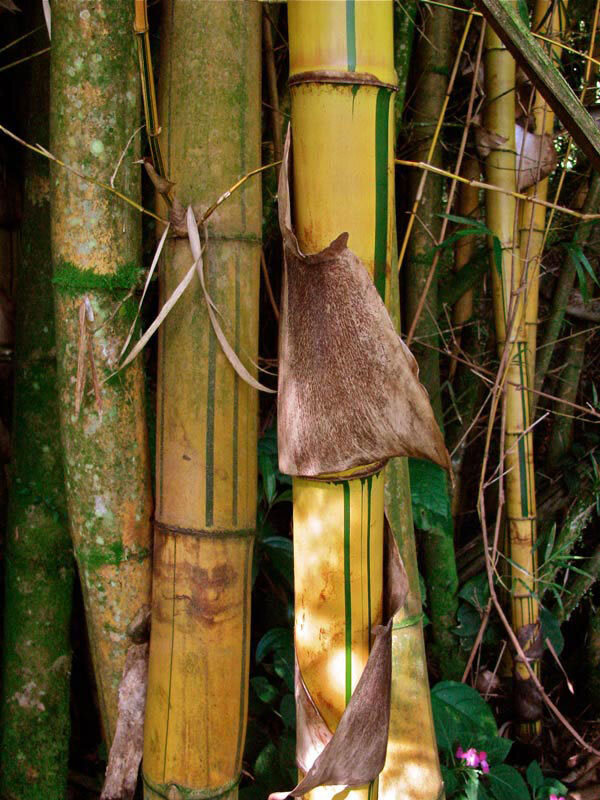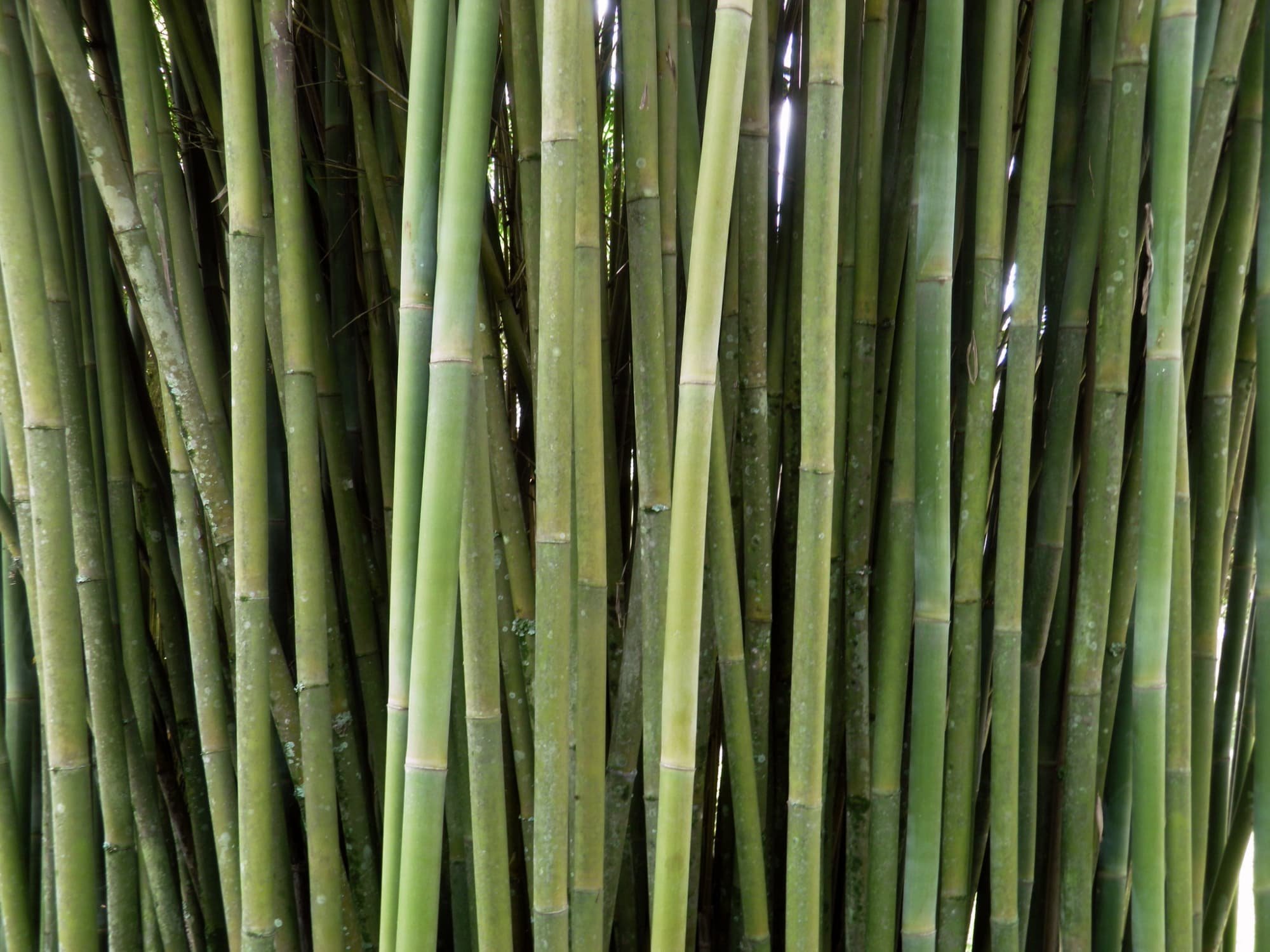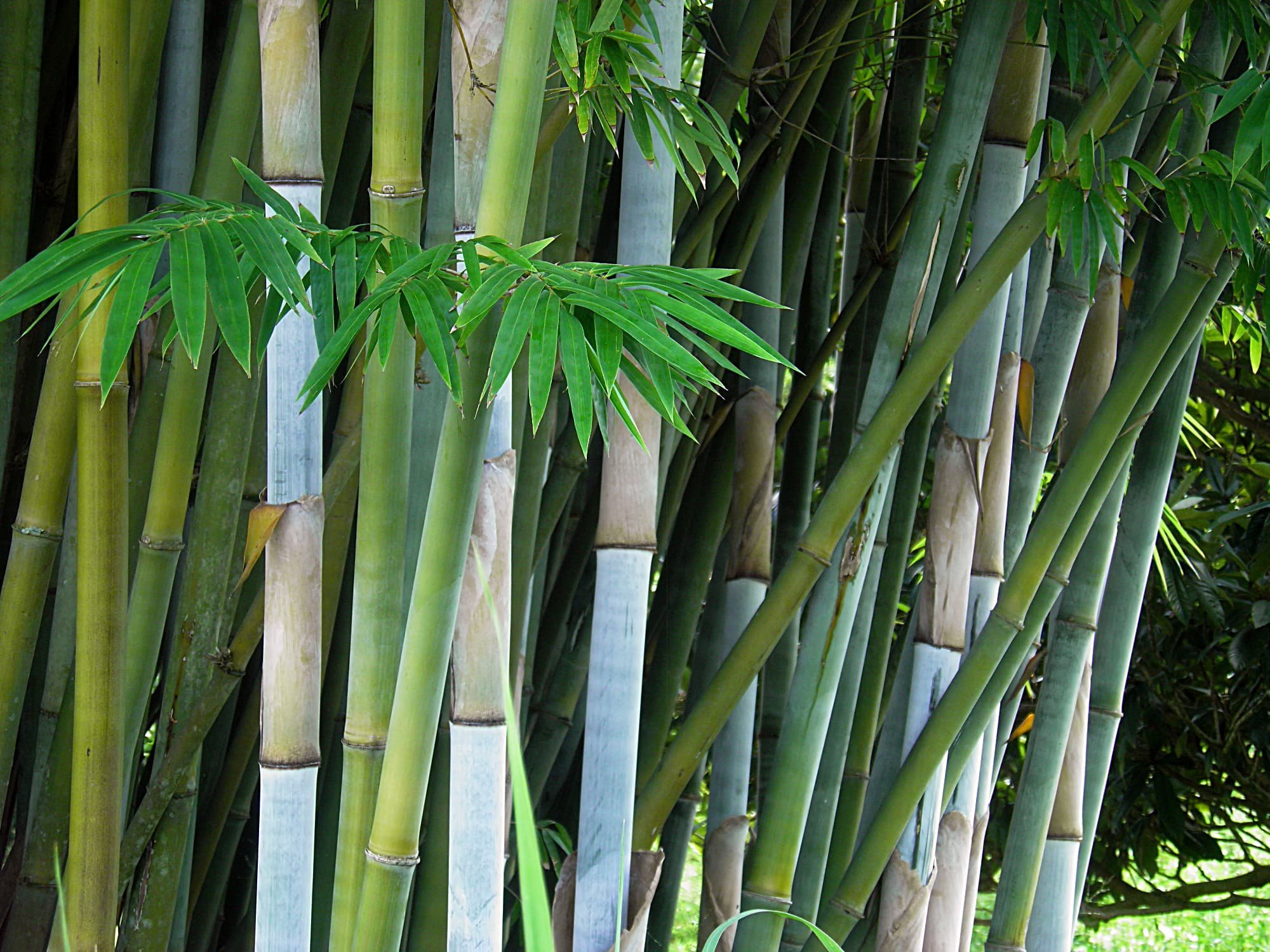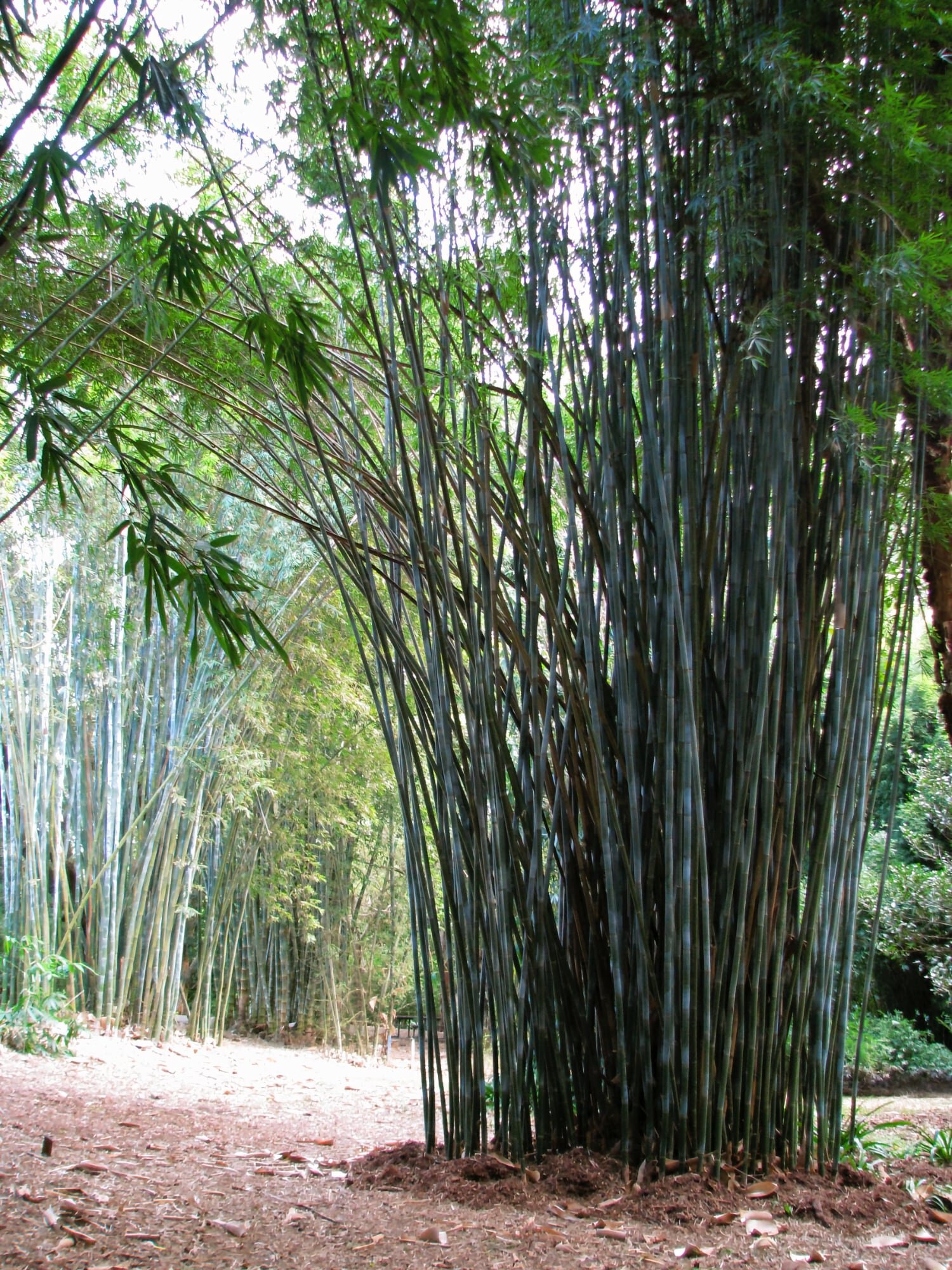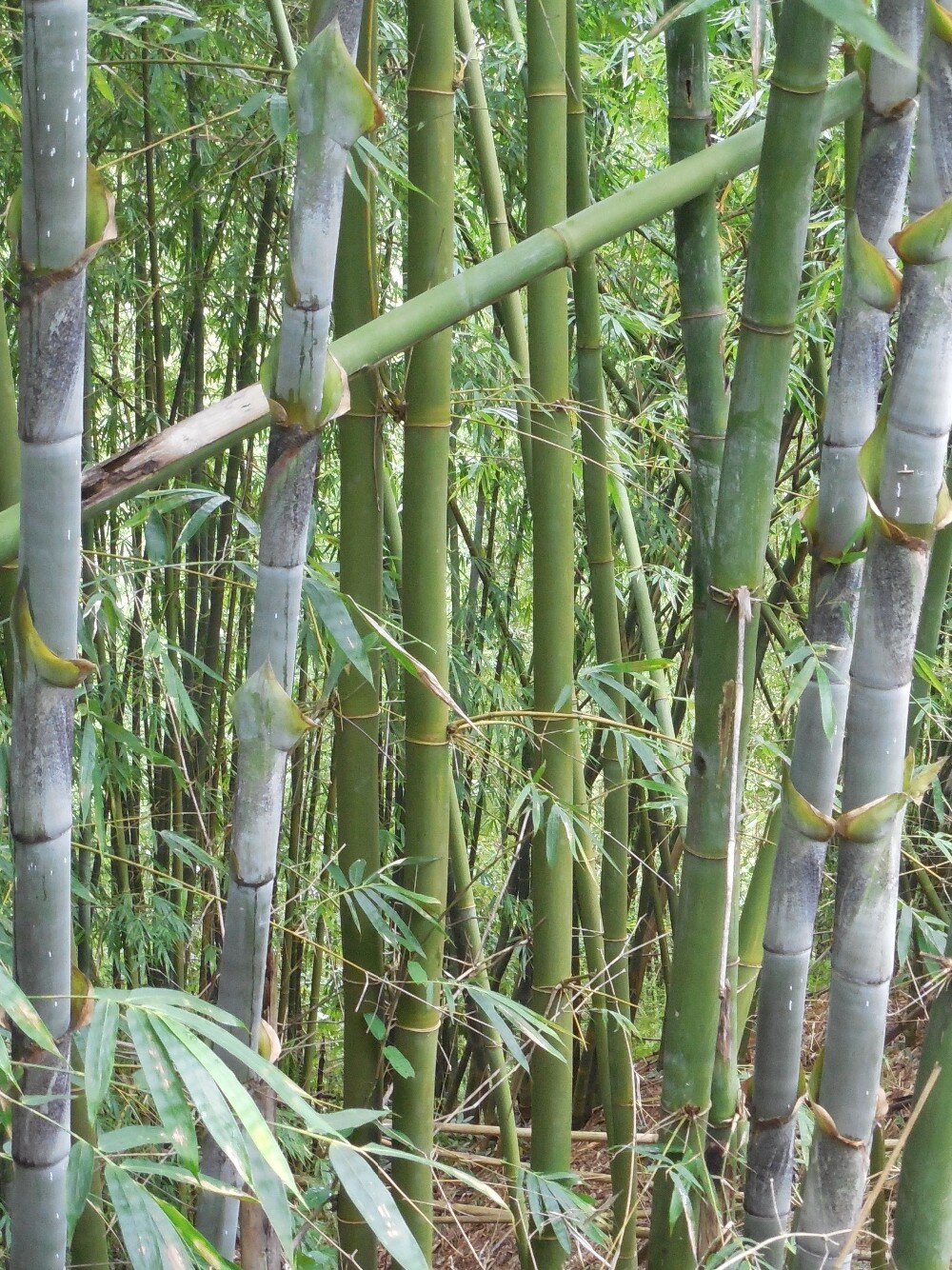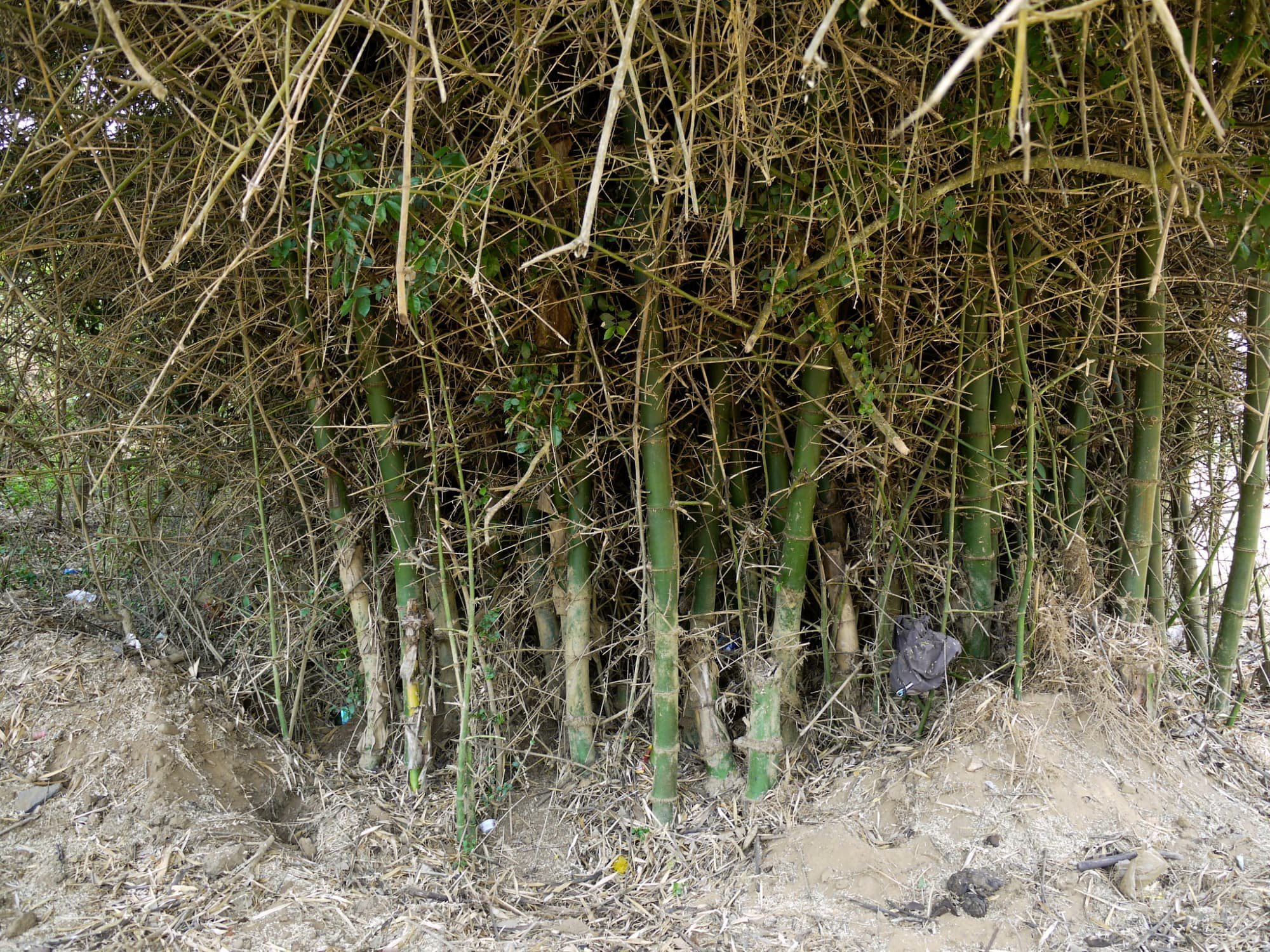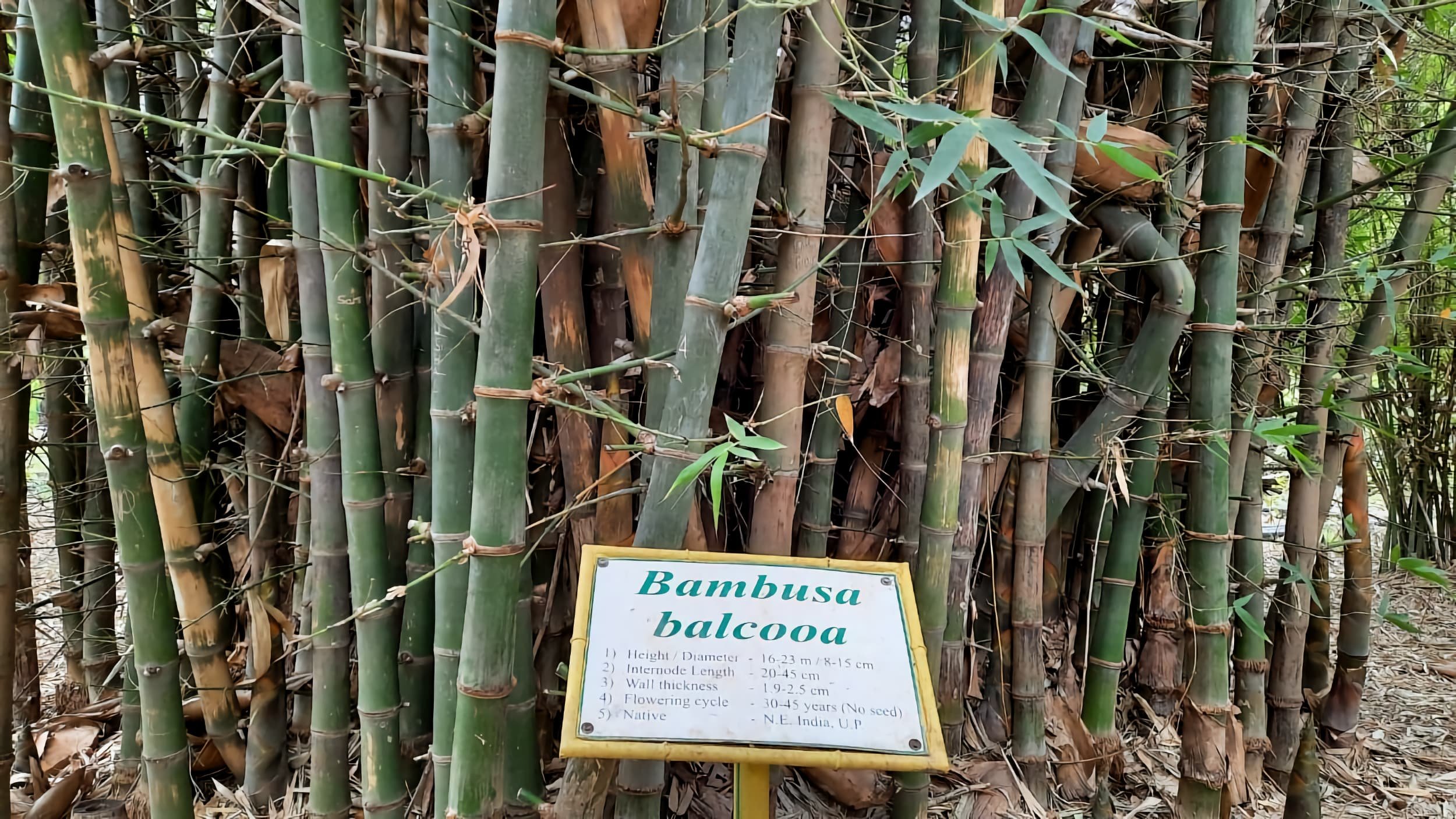Bambusa vulgaris 'Vittata'
Bambusa vulgaris 'Vittata' or Painted Bamboo, (previously known as Bambusa striata) is a medium sized tropical and subtropical clumping bamboo native to China and the Indochina region. It is one of the most cultivated ornamental bamboos in the tropical world.
| Plant Info | |
|---|---|
| Scientific Name | Bambusa vulgaris ‘Vittata’ |
| Synonyms | Bambusa striata |
| Common Names | Painted Bamboo, Golden Common Bamboo, Barcode Bamboo |
| Family | Poaceae |
| Tribe | Bambuseae |
| Genus | Bambusa |
| Height | 10 - 15 m |
| Diameter | 5 - 8 cm |
| Growth Habit | Clumping |
| Color | Bright yellow marked at random with wide and narrow green stripes (or rarely light green with yellow stripes). |
| Internodes | 20-45 cm |
| Wall thickness | 7-15 mm |
| Branches | Several or many branches grouped with 1 larger branch. |
| Leaves | 6-30 cm long, 10-40 mm wide. |
| Climate | Tropical - Subtropical |
| Exposure | Full Sun - Partial Sun |
| Hardiness | -1°C |
| Soil | Loamy and alluvial soils, well drained. |
| Water Needs | Average |
| Planting Distance | • Every 3 m for screening. • 5 x 5 m for culm production. |
| Edibility | (1 of 5) |
| Flowering Cycle | 80-150 years |
| Origin | Cambodia, China, Laos, Myanmar, Thailand, Vietnam |
| Uses | Light Construction, Basketry, Plant Support Sticks, Medicine, Paper Pulp, Ornamental |
Culms
The glossy culms of Bambusa vulgaris 'Vittata' are bright yellow randomly marked with narrow and broad green stripes (or rarely light green with yellow stripes), and have an average height between 10-15 m. Internodes are 10-15 cm long, thick-walled, and have an average diameter of 5-8 cm. The type of striping on the culms is known to vary in different plants, or even within an individual plant. For example, there exist plants of yellow internodes with a few narrow green stripes, or without any green stripes, as well as plants of green internodes with a few yellow stripes.
Branches
Several to many clustered branches with 1 larger dominant branch. Branches are often striped as well.
Leaves
Narrow lance-shaped leaves which are on average 6-30 cm long and 1-4 cm wide.
Seeds
Last reported flowering and seed-setting was in 1873.
Habitat
This bamboo species grows up to an altitude of 1,000 m and can survive low temperatures up to -1°C.
Uses
Commonly and widely planted as an ornamental bamboo, as hedges to border land or as erosion control on slopes or riverbeds. Water from boiled shoots is also used as a medicine. Culms are used as poles in light construction or furniture. In Central America often used to make baskets or as tv-antenna posts.
Origin
The origin is the Old World tropics, but the precise origin location is not known, which could be southern China, South-East Asia, or Madagascar. Nowadays distributed all over the tropical world.



